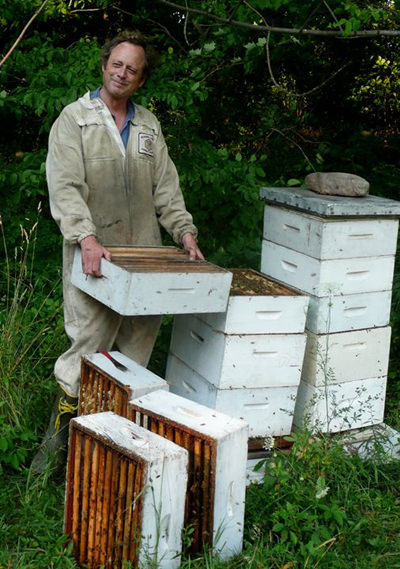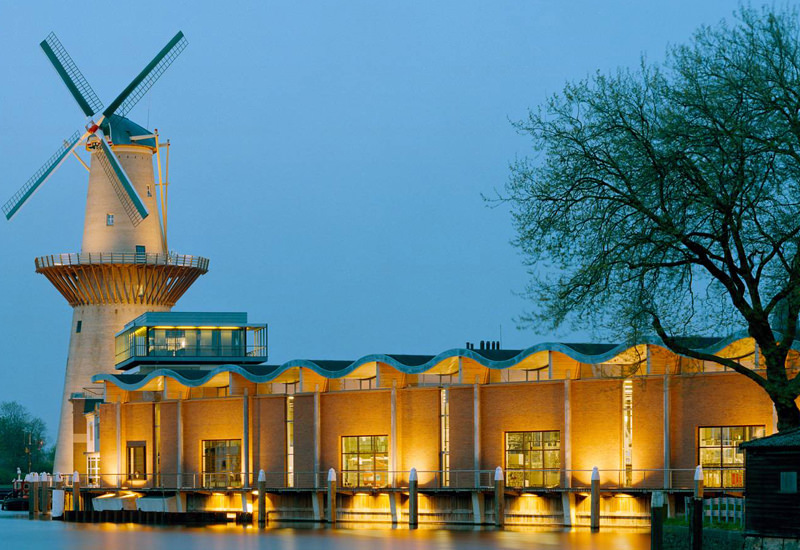Just what makes craft alcohol so damn special? Why should I pay $80 for a bottle of vodka? Isn’t it just grains and water?
These questions sound like church bells – carrying tidings of joy or judgment depending on who’s doing the asking and answering – up and down the aisles of liquor stores and at bars across America, as perplexed drinkers struggle to understand the seemingly unstoppable dominance of high-priced regional craft brands.
There are a few obvious causes for craft alcohols’ elevated prices, and a few less obvious ones. For one, ingredients, like esoteric components, sustainable farming methods and pricey hyper-local sourcing drive up costs. Methods factor in as well (craft alcohol is often harvested and/or produced by hand instead of machine using complicated and fragile equipment) as does time (aging alcohol that could be sold earlier is costly). These are the most commonly cited reasons for high prices, but there’s more to the story than that.
Probably the least-understood or discussed reason for the high price of alcohol is the cost of the new economic model these producers have created, and we as consumers, have bought into.
“The quality component of high prices is obvious,” Shannon Gunier, president of the Lake Country Winegrape Commission and Executive at North Coast Winegrapes, a wine-grape broker sales firm, says. “You compare an organic local heritage Thanksgiving turkey roasted in your oven with handmade sides, to a microwavable Swanson turkey dinner and you’ve got two products with similar components, in very different forms. The care and quality of ingredients is paramount and changes the experience. But there’s more to it. They are projecting a message that they think consumers are going to want to relate to. Is Revlon selling lipstick? Kind of. But they’re also selling hope.”
Business owners and consumers are getting back to real, old-fashioned values,” Shannon says. “I come from the Rolex and BMW generation and even we’re changing our tune…people value real, human connections, family fun, community and niceness. And they’ll pay extra for it.
Distilleries, breweries and wineries that choose to work with local, sustainable ingredients – unless they’re completely cynical – are making business choices that reflect their values. But they are also pushing the artisanal, local and/or organic angle of their business model to the public because they believe that’s what they want to hear, Shannon says. They’re selling heart.
These producers don’t have a national advertising budget, but they have to find some way to get into consumers’ hands if they want to make money. And that costs money.
“I remember Napa in the early 70’s when it was a one-horse hick-town,” Shannon says. “Now it’s like the Disneyland of wine. These guys know how to tell a story, and they know how to be nice – which seems basic, but so many of the guys who fail just don’t grasp that simple concept: the human touch. The most successful ones invest time and money in educating every member of their sales and tasting-room team so they can go out and tell their story well.”
The outlines of the story – pretty much across the board – are pretty similar. Each producer is often just rehashing the harsh economics of struggling agricultural communities that are lifted up by value – added products like booze – the differences between stories are in the nuances. And the small differences, the personal story, is what consumers seem to crave.
The downturn in the economy may have hit some wallets harder than others, but it seems to have done something permanent to our hearts. Consumers want to buy from their farmer and mom-and-pop shop down the street, people who will employ members of their community and invest their earnings right back in their hometown, studies show.
Seventy percent of U.S. consumers are at least sometimes influenced to purchase a product based on a company’s ethics, according to research from Mintel, a market research company. And they’re more likely to trust a smaller company: 49% say small companies do the “right thing”, while just 36% believe large companies do. The most commonly cited factors in determining a company’s ethics is how its employees are treated (48%), where they are made (34%) and if they’re environmentally friendly (33%).

Barr Hill Spirits, a Vermont-based distillery founded by a beekeeper with 1,900 colonies, and the apiary and bee inspector for Vermont’s Department of Agriculture, Todd Hardie, is the epitomee of a small craft distiller.
Todd – like many successful craft producers, in spirit if not in practice — is a child of the 1960’s. His approach to business is as holistic and organic as his approach to crafting his award-winning spirits. Everyone at the company, from the distillers to the brand ambassadors spends time with Todd where they learn the ins and outs of his gin-making process, the importance of the quality of the ingredients used, his passion for bees and commitment to local agriculture, he even tells employees about his family and daughters. (Editor’s note: the reporter spent a brief time working for Barr Hill as a brand ambassador).
This almost insanely expensive method of doing very humane business is reflected throughout Todd’s company, where beekeepers, farmers, sales and production people were paid fairly and whose contribution, no matter how menial, was valued. According to the other brand ambassadors for similar high-end, local distilleries, wineries and breweries that I met at tastings – this rootsy, old-fashioned mom-and-pop sales style is pretty typical.
“Business owners and consumers are getting back to real, old-fashioned values,” Shannon says. “I come from the Rolex and BMW generation and even we’re changing our tune. But then you look at the Mark Zuckerberg generation and he doesn’t even know what a tie is, never mind the flashy glitz – people value real, human connections, family fun, community and niceness. And they’ll pay extra for it.”
The retrograde door-to-door 1950’s vacuum-salesman business model that craft brands are employing may be the secret to the industry’s success. The numbers don’t lie: A decade ago, there were 50 craft distilleries on the market. Now there are about seven hundred and sixty nine. American craft brewers now produce 1 out of every 10 beers sold in the U.S., according to data from the Brewers Association, an industry trade group. Craft brewers (defined as those who produce less than 6 million barrels a year and aren’t owned or controlled by a larger group) cranked out 22.2 million barrels last year, up 18% by volume and commanding 11% of the total beer market.
The wine industry continues its slow but steady growth: the number of new wineries in North America grew at a faster pace last year than they had previously. In 2014, 525 new wineries opened in America, up about 7% year-over-year, according to Wines & Vines. The number of virtual wineries (with brand names but no brick-and-mortar facilities) grew by 23% in 2014.
Still, no matter how much you may love the story behind the brand – almost always starring a young idealist’s turn away from the big bad world of money-making to return to the land, with dramatic financial mishaps and miracles and hard-won agriculture lessons throughout – you probably won’t buy a second bottle if it tastes just like a big brand, at twice the price. Or worse.
 Raw, organic honey sets Barr Hill apart from other gins on the market. Your grandfather’s juniper-happy London Dry it is not. The gin is made from a neutral corn-based spirit, with some juniper, distilled twice in a custom-designed botanical extraction still, but dominated by a complex bouquet of botanicals courtesy of raw, organic honey that subtly changes flavor depending on what the “free-range” bees are eating (apples in the spring, milkweed in the summer). It rounds out the essential harshness of gin, with the symphony of flavors raw honey imparts.
Raw, organic honey sets Barr Hill apart from other gins on the market. Your grandfather’s juniper-happy London Dry it is not. The gin is made from a neutral corn-based spirit, with some juniper, distilled twice in a custom-designed botanical extraction still, but dominated by a complex bouquet of botanicals courtesy of raw, organic honey that subtly changes flavor depending on what the “free-range” bees are eating (apples in the spring, milkweed in the summer). It rounds out the essential harshness of gin, with the symphony of flavors raw honey imparts.
In addition to the gin, Barr Hill offers vodka distilled from 100% honey, Tom Cat gin, which is their classic, but aged in barrels for six months. Last year, Ryan says they used about 125 barrels of honey to make their products, and each barrel contains about 600 pounds of honey. In 2016, a bourbon and possibly a corn whiskey and rye will join the party, depending on how lead distiller Ryan Christiansen feels their two-year stint in bourbon barrels went. But what Ryan and the rest of the crew at Barr Hill says they’re most excited about is their hyper-local oak barrel project.
“The whole mission of Barr Hill is to support local farmers, the local economy and hire local people, so this is really exciting,” Ryan says. “We buy as much grain as possible from local Vermont and just-over-the-border Canadian farmers. We get our juniper locally. We get our honey from central New York. We’ll start getting grain from Todd’s new 70-acre farm, which is just being rehabilitated now. Our new oak barrels are white oak, being cut down for the health of the old forest last year.” It was air-dried for a year, and barrels are being produced now to be filled with special batches of Tom Cat and rye whiskey. When finished, the product will be almost hilariously uber-local and sustainable, and more than likely, delicious.
But what happens when small-batch folks get big — really big? We reached out to Nolet’s, one of the most well-respected big batch distillers on the market, to talk sustainability and ingredients.
Nolet’s has been distilling spirits in Holland since 1691, passing the business from father to son for 11 successive generations. According to a representative for Nolet’s, “Every batch of spirits distilled is tasted by a member of the family before they are approved for bottling.” The tenth generation of owners – Carolus Nolet – launched Ketel One Vodka as well, after taking over for his father in 1979.
Ketel One is made exclusively from non-GMO wheat grown in Europe, distilled from a continuous still that has been built to the exacting specifications demanded by the family. It is called “Ultra” because of the exacting specifications to which it is produced, using a four-column distillation process over a 15-hour period for an alcohol strength of approximately 96%. (The so-called Ultra Wheat Spirit has very high purity specification levels compared to standard grain neutral spirit, which, for example, has higher methanol levels, a rep explains.)
Nolet’s gin, has been in many ways, the unwitting amuse bouche for the craft industry. It has been credited for breaking the juniper-heavy mold on the mass market, priming the world’s palate for a botanical, floral gin that is worthy of a lot more behind-the-bar-fun than just a G&T. In 2010, the family launched NOLET’S Finest Gins, the company says, to reflect “the tastes and preferences of a new generation of gin drinkers.”

The recipe creation for NOLET’S Silver was a collaboration between eleventh generation sons, Carl Jr. and Bob, and their father, Carolus Sr., tenth generation distillery owner. “Its refreshing floral and fruit-forward flavor highlights a unique combination of botanicals never before used in a gin,” Carl Nolet, Jr. says. The recipe for NOLET’S Reserve was developed and perfected over 40 years by Carolus Nolet, Sr. The product is designed to be a sipping gin made so through the use of botanicals, including saffron and verbena.
“For years, gin has been recognized as a juniper-forward spirit, but more recently we’ve started to see different interpretations on the spirit which appeal to consumers who likes to be surprised and discover new flavors,” Carl Nolet, Jr., says. “The floral and fruit-forward botanicals of NOLET’S Silver – Turkish rose, peach and raspberry – are a perfect example of this, allowing consumers to find an approachable gin without that juniper-heavy flavor that they can truly enjoy. This unique flavor profile brings a huge amount of versatility in cocktailing.”
While flying botanicals in from around the world for their gins and sourcing citrus from Sicily, Spain, the Caribbean and Guinea for Ketel One’s Citroen to capitalize on the taste profiles each country produces in its lemons and limes (“climate is the major influencer in shaping the character of citrus fruits,” a rep explains) is the opposite of local, the company says it prioritizes many of the same values that small-batchers espouse.
The key to small-batch success is its self-sustaining nature: the money that small-time producers pour into getting their story out is paid back when consumers buy into the story and the brand.
“To preserve clean air in Schiedam, in the early 1980s Carlous Nolet Sr. leveraged a number of energy saving measures,” a rep explains. He installed an underground thermal storage system to manage temperatures and installed LED lighting to reduce consumption. In 2005, Carl Sr. built a 141-foot tall windmill which boasts a swank lounge – and generates green power for the distillery.
Right now, the key to small-batch success is its self-sustaining nature: the money that small-time producers pour into getting their story out – in man hours, in staff, in overhead – is paid back when consumers buy into the story and the brand, which pays the staff, which continues the story, which employs people, which is good for the community the brand is based in, because it almost always employs people from the region itself.
While big brands have been jumping on the small-batch bandwagon and creating pricey limited editions with unexpected (if not necessarily eco-friendly) ingredients and production methods, there are signs that they’re also cluing into the fact that consumers want accountability and sustainable sourcing. Perhaps craft doesn’t always have to mean small. But buying small (and yes, expensive), in addition to drinking a unique draught of super-regional terroir, ensures that the vast majority of your expenditure is lining the pockets of beekeepers, part-time sales people who need the cash, family farmers and foresters. Wherever you live, you’re close to one.
Some distilleries that stand out from the crowded, delicious field:
Lost Spirits (Monterey County, California): Their single malt with local peat aged in sherry-seasoned oak casks
Hillrock Distillery (Ancram, New York): the Solera aged Bourbon was one of the first whiskeys to employ the method of blending younger whiskey in with older barrels.
High West Distillery (Park City, Utah): The Bourye blend is a spicy but smooth mix bourbon and rye whiskeys.
